Snapdragon 800 (MSM8974) Performance Preview: Qualcomm Mobile Development Tablet Tested
by Brian Klug on June 18, 2013 8:00 PM ESTGFXBench 2.7
GFXBench (formerly GLBenchmark) gives us some low level insight into Adreno 330. As usual, we'll start with the low level tests and move onto the game simulation benchmarks:
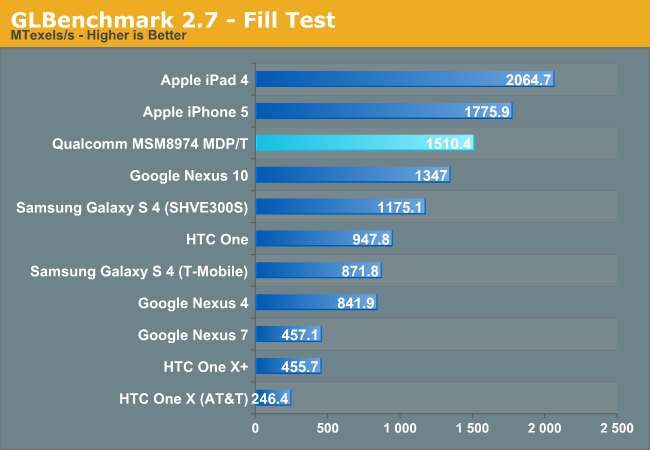
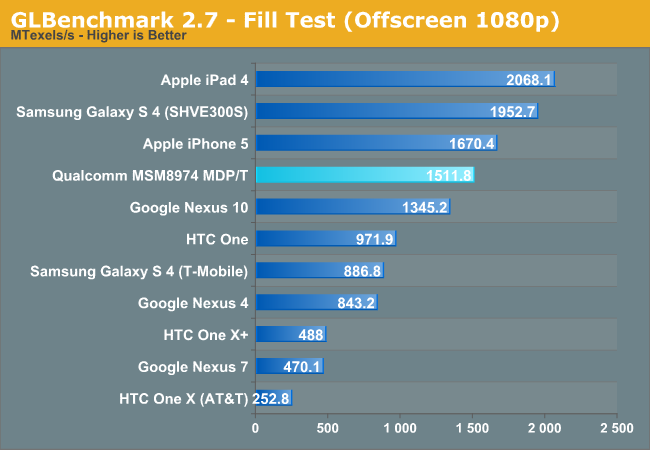
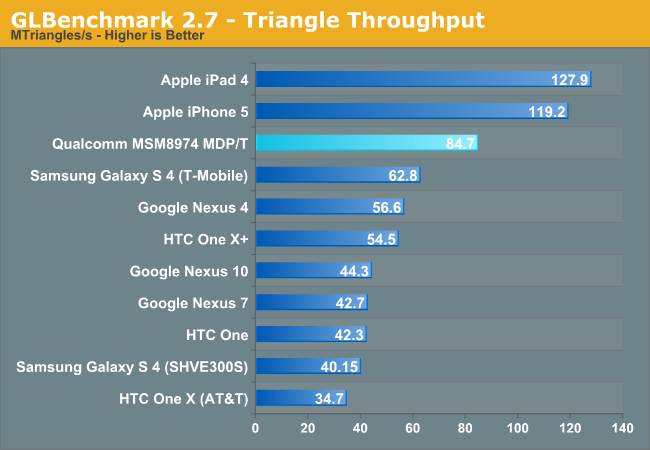

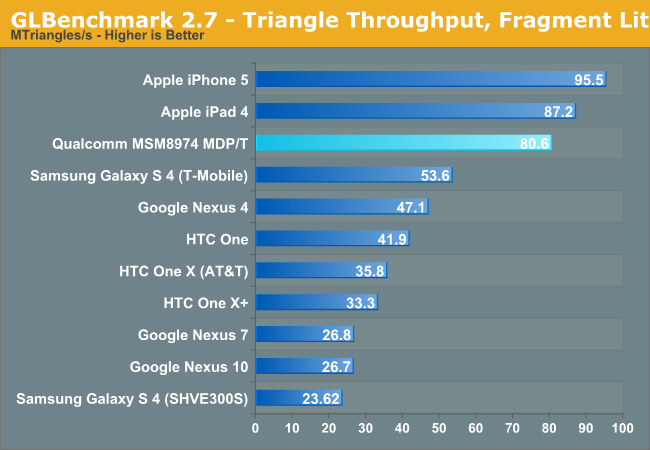
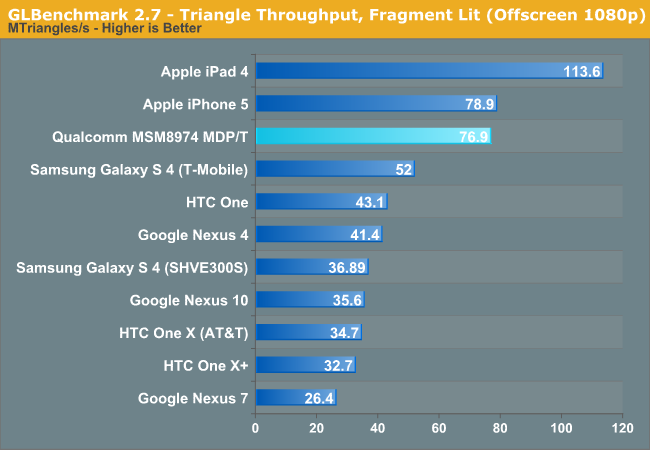
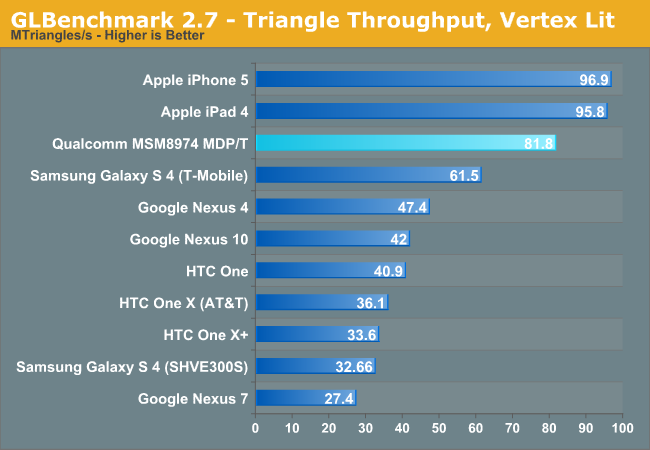
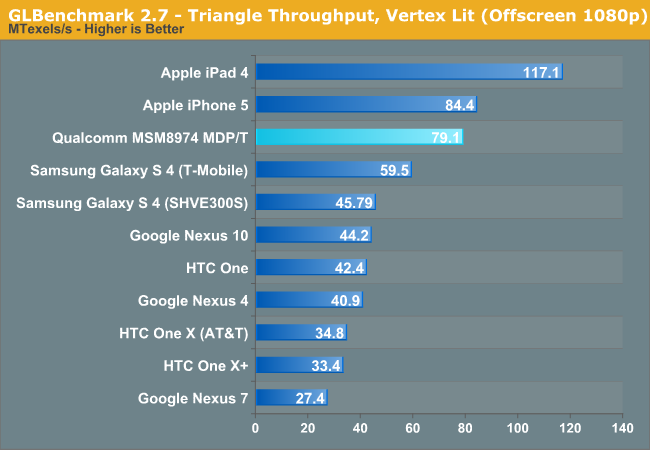
Low level geometry and fill rate metrics are dominated by Imagination Technologies. If we look at the simulated game benchmarks though, Snapdragon 800/Adreno 330 clearly pull ahead:
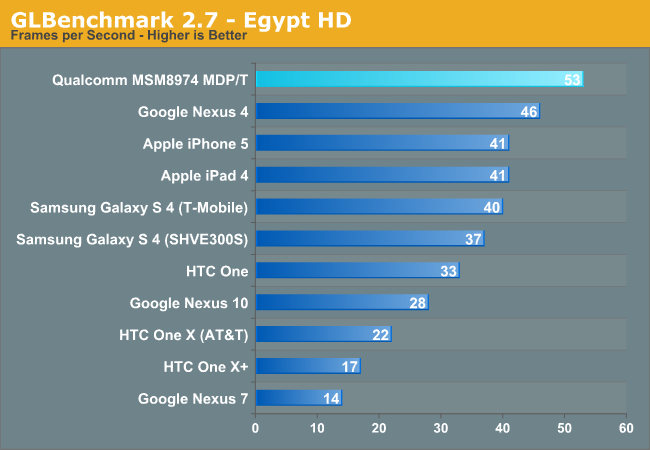
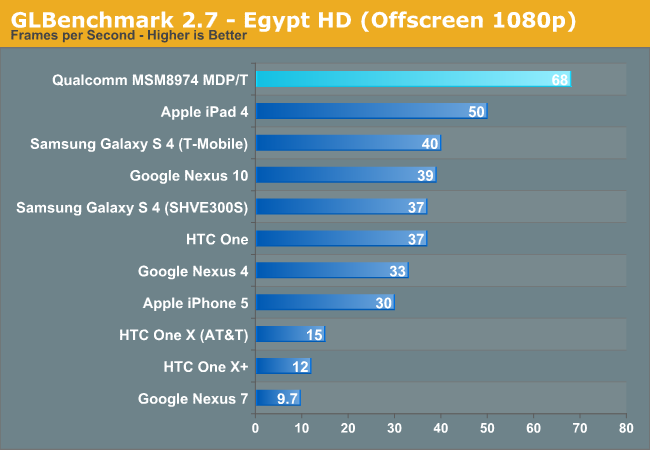
The most impressive results come from one of our most stressful tests. On equal footing, Adreno 330 delivers 62.5% better performance than the iPad 4's PowerVR SGX 554MP4. Note that these are largely shader bound tests. Snapdragon 800 should have less memory bandwidth than Apple's A6X, which could make for some interesting comparisons at high resolutions in actual games.
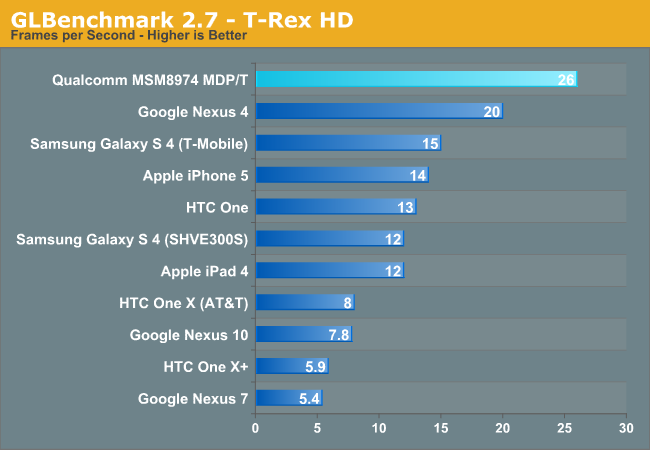
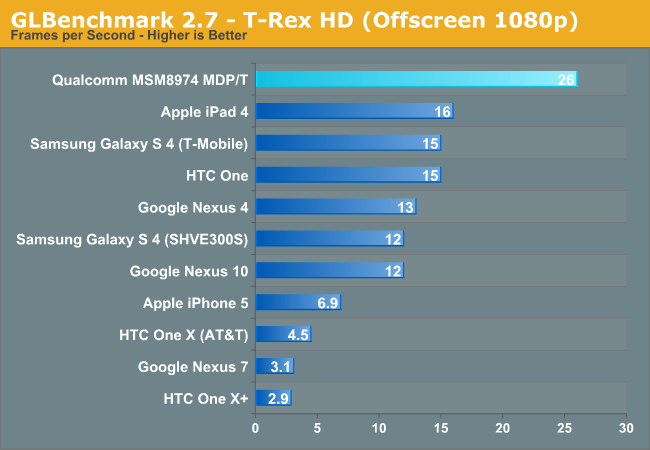










115 Comments
View All Comments
Wilco1 - Thursday, June 20, 2013 - link
A low clocked single or dual Haswell won't be anywhere close to 4 times faster than a high clocked quad A15/Krait.jeffkro - Wednesday, June 19, 2013 - link
Cool, should make a great chromebook processor.WagonWheelsRX8 - Wednesday, June 19, 2013 - link
Good stuff, always like hardware reviews on Anandtech!Feature Request: When you create the charts, can you include the SoC next to the device name? It's good to know that a Google Nexus 10 is faster than Google Nexus 4, but I think the additional information of the SoC contained within would help chart readability greatly.
Thanks!
Kill16by9TN - Thursday, June 20, 2013 - link
I very much second that, since I was struggling with the very issue, always scrolling up and down in an effort to keep up with which SoC is in which product.MrPhilo - Wednesday, June 19, 2013 - link
Anyone know the reason why the Galaxy S4 (Exynos 5420) GPU performs slower than the iPhone 5 GPU on offscreen test? Even though the GPU is similar but the S4 having a higher clockspeed and higher bandwidth?Cotita - Wednesday, June 19, 2013 - link
I don't think Tegra 4 will be able to compete here. Tegra 5+kepler will be its last chance.Alberto - Wednesday, June 19, 2013 - link
Since performance comes at a cost, this Soc seems in the 8/10 W Tdp range running games. The comparison is pretty clear with A4-5000, done on the same process.Likely the power draw is lower in cpu only tasks but IMO users will enjoy a fast battery death under games. It's a Qualcomm choice, will see the market acceptance.
I prefer more balanced socs, this do not seem the case.
virtual void - Wednesday, June 19, 2013 - link
I will be interesting to see how the Silvermont based SoC stand up against Snapdragon 800 and Tegra 4. I guess it will do quite well considering that CloverTrail+ seem to beat even Exynos 5 Octa. CT+ is a dual core CPU using a 5 year old Atom design...And this is the most interesting part "Intel's chip scores highest on the most tests and draws the least current"
http://www.androidauthority.com/intel-clovertrail-...
I don't feel that today's phone need more CPU-power, they should instead focus on reducing power consumption. But tables can definitely use a lot more CPU-power!!
Wilco1 - Wednesday, June 19, 2013 - link
Exynos Octa beats the current fastest Atoms by a huge margin at a lower clock speed, so don't expect Silvermont to come close to A15: http://browser.primatelabs.com/geekbench2/compare/...That link seems to be an Intel sponsored test without any details how it was done. The benchmark I linked however is known to be independent and doesn't favour either Intel or ARM.
virtual void - Wednesday, June 19, 2013 - link
How does that link seem Intel sponsored? The numbers presented by the analyst firm is just the numbers from Antutu and that has been verified by others (search YouTube for example).If you read the review of the Z2460 & Z2670, then notice that Geekbench is really the only benchmark where those SoC performs bad against ARM SoC used at that time (Tegra 3 was very popular at that point).
If you ever actually used units based on Z2460 or Z2670 (tablets) side by side with units using Tegra 3 running the same OS and application, then you would know that the Atom systems definitely feels faster so I don't really trust Geekbench as a measurement on how things feel.
Cortex A15 is not that far behind Core i5-3320M according to Geekbench, which to anyone that used systems using those CPUs know is kind of ridiculous.
http://browser.primatelabs.com/geekbench2/compare/...
The question one can ask oneself: how come that two benchmarks that are supposed to measure roughly the same attributes of a system get such radically different result? Do you have other benchmarks? The only other benchmarks I can find myself are the web-based ones and they show the Atom in pretty good light.